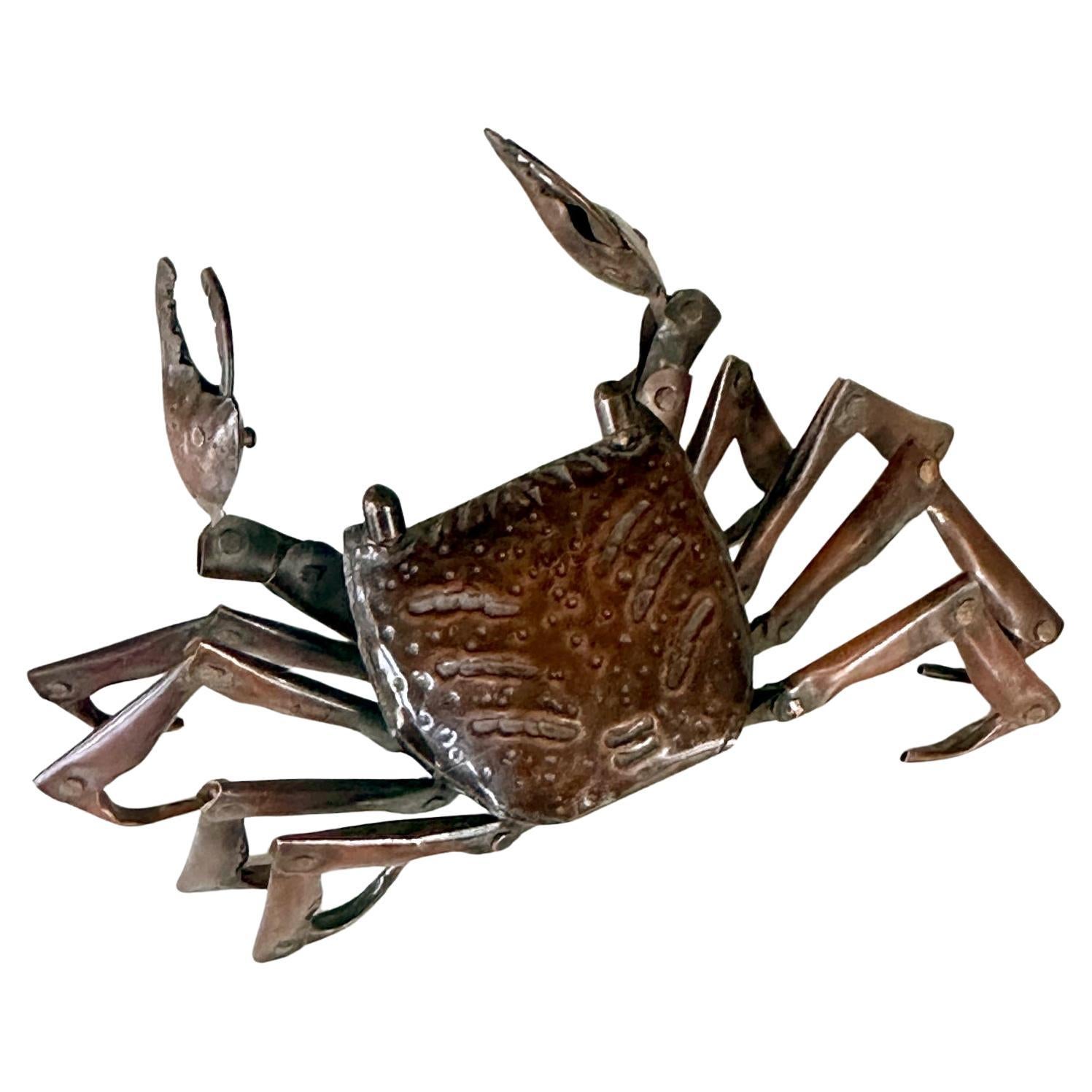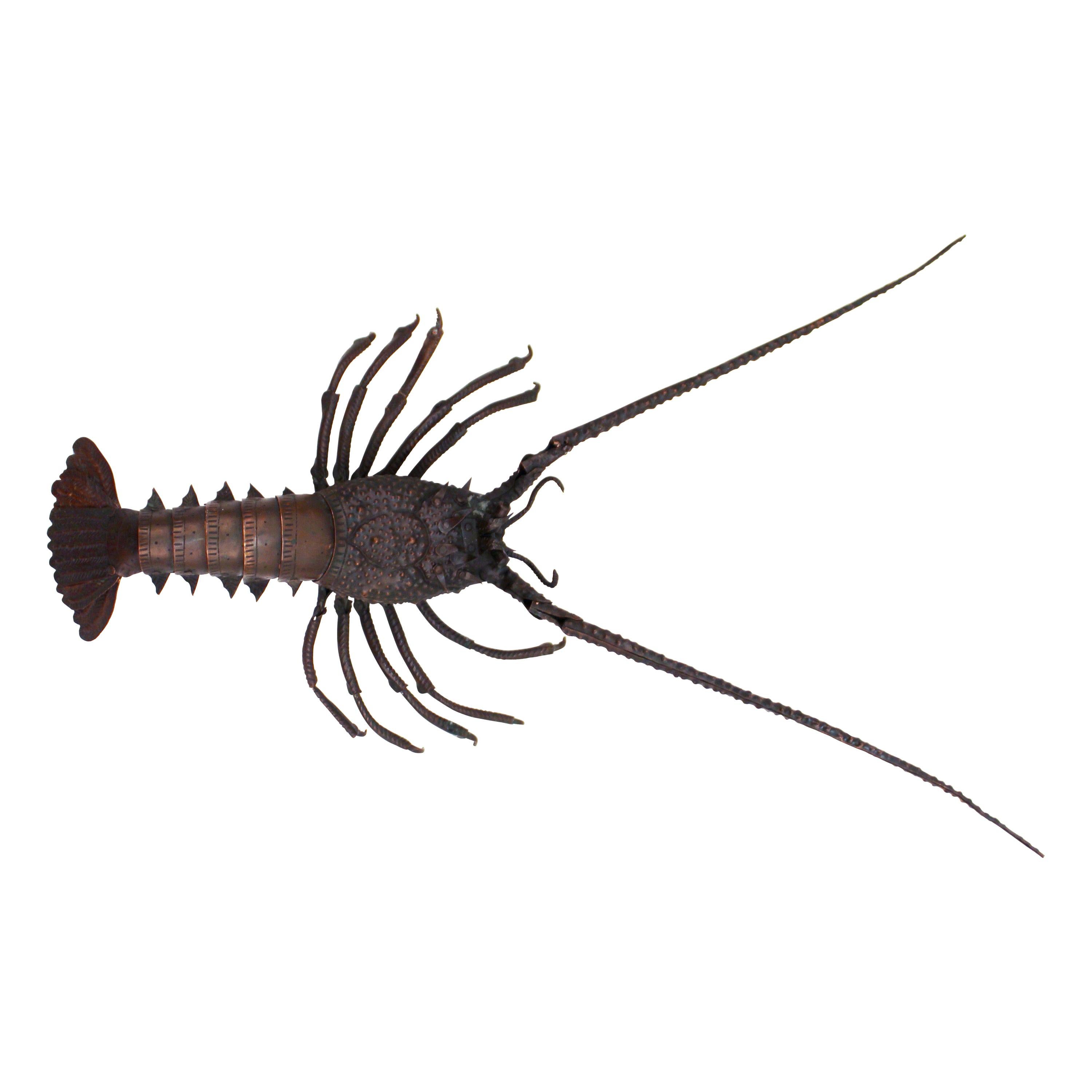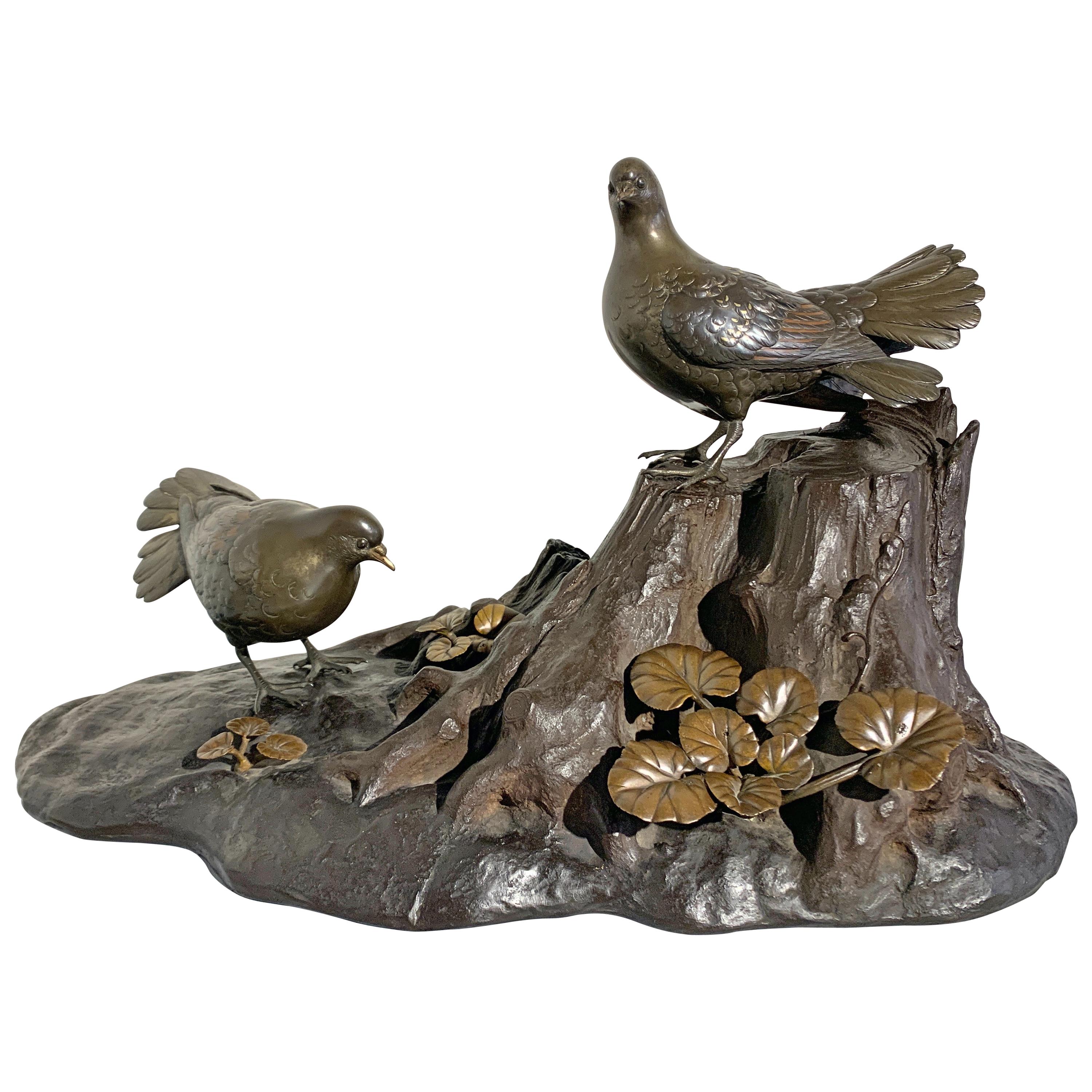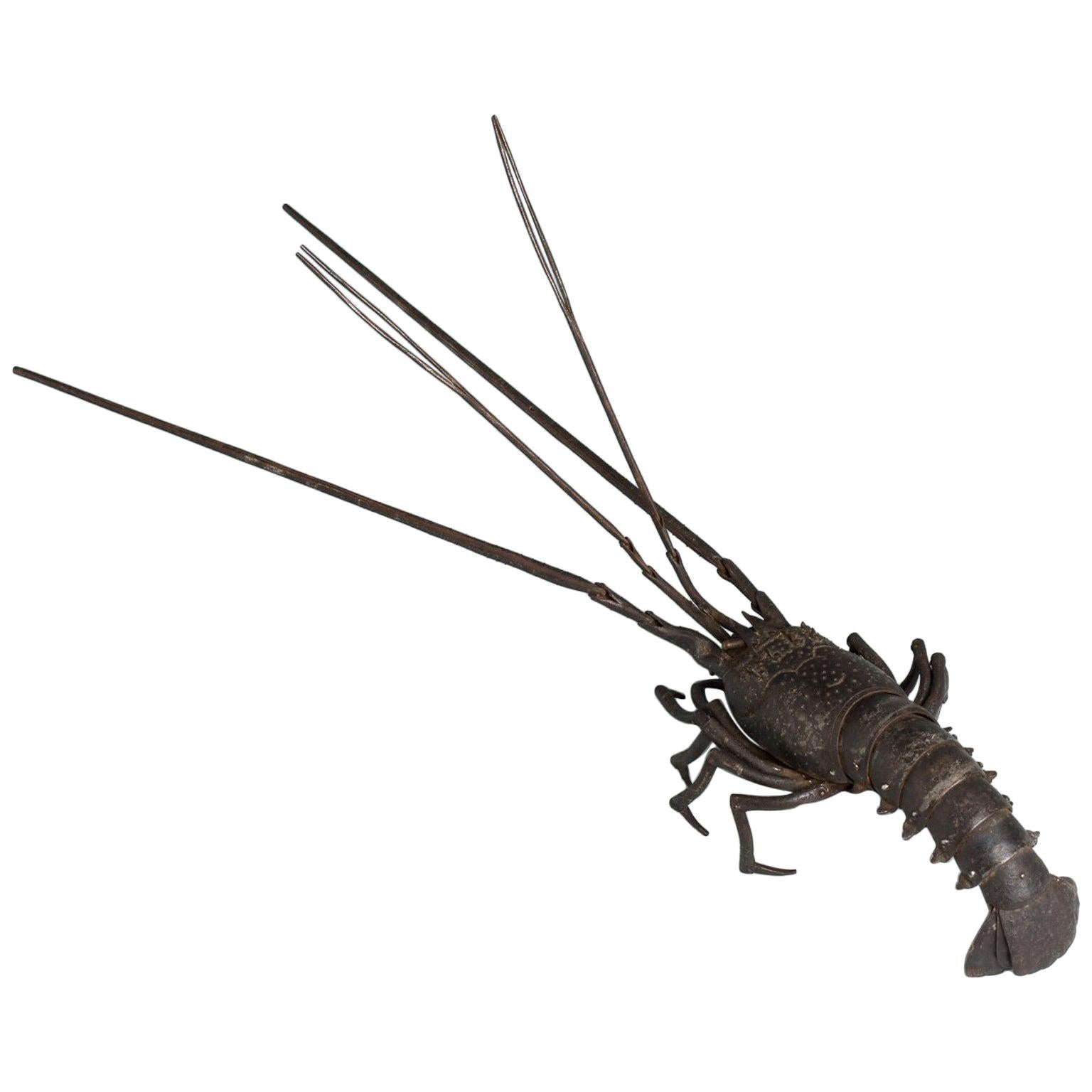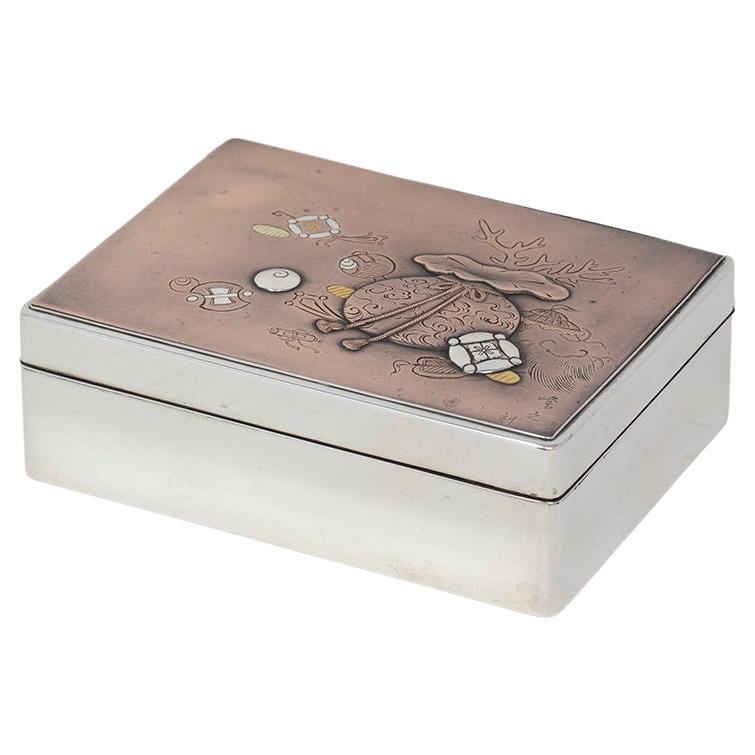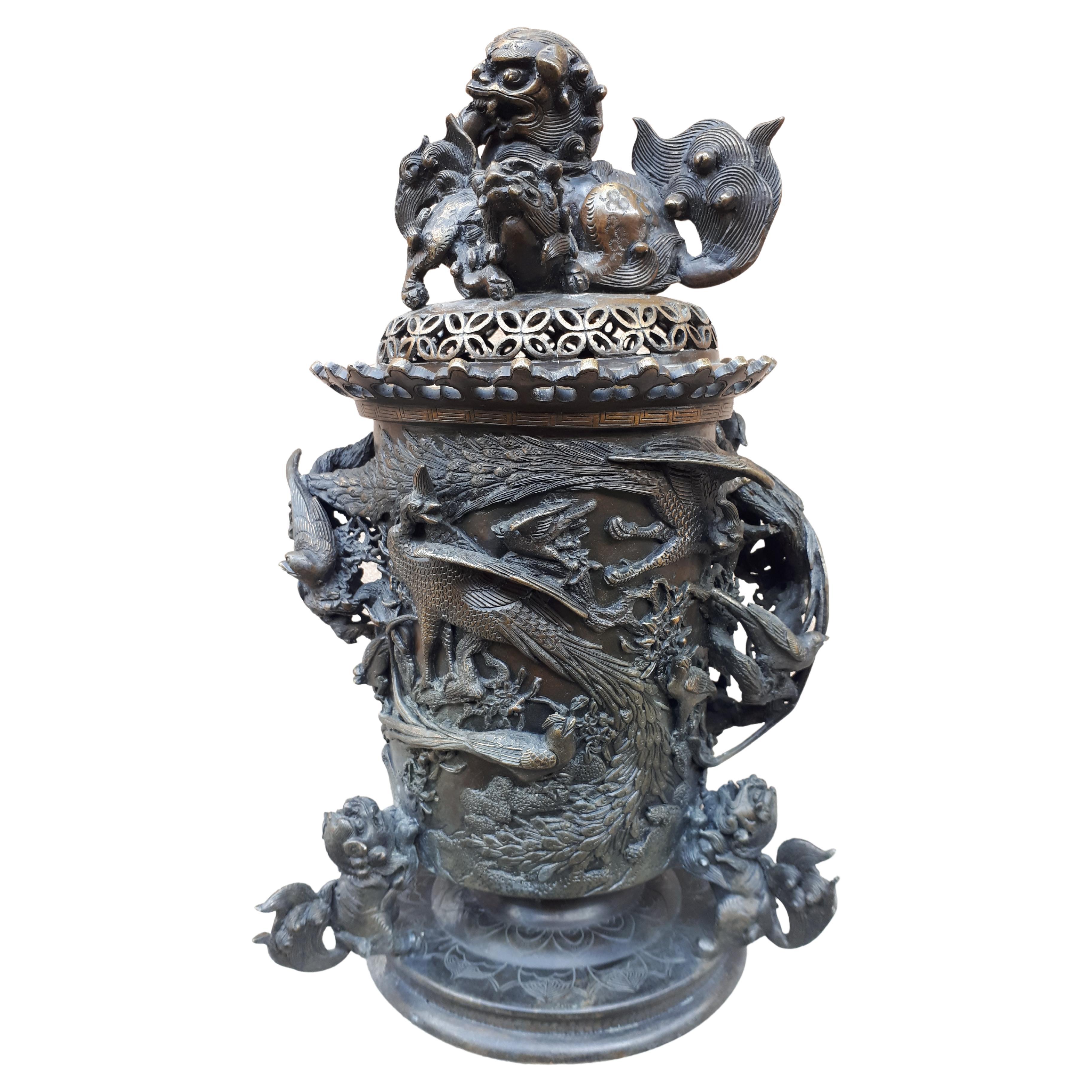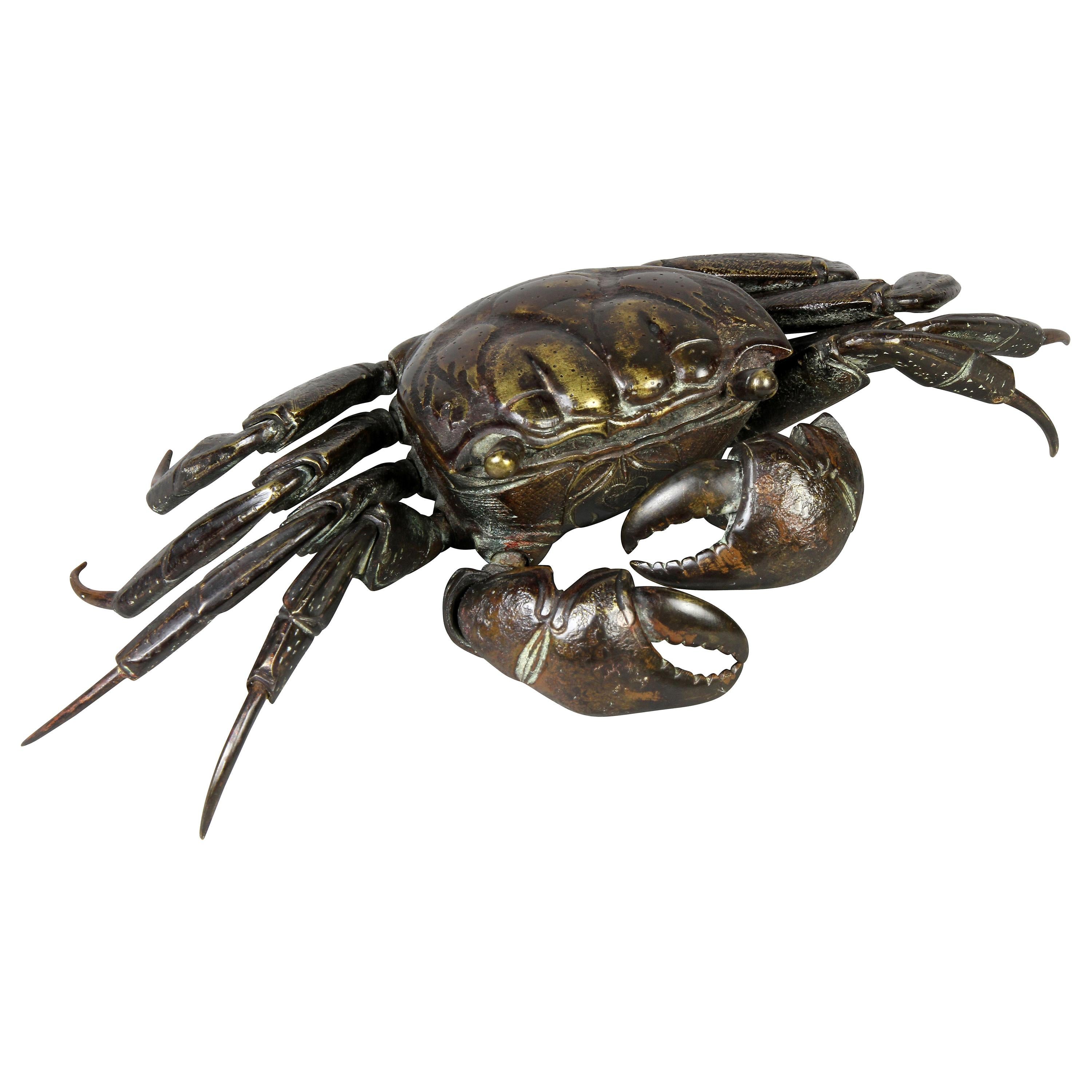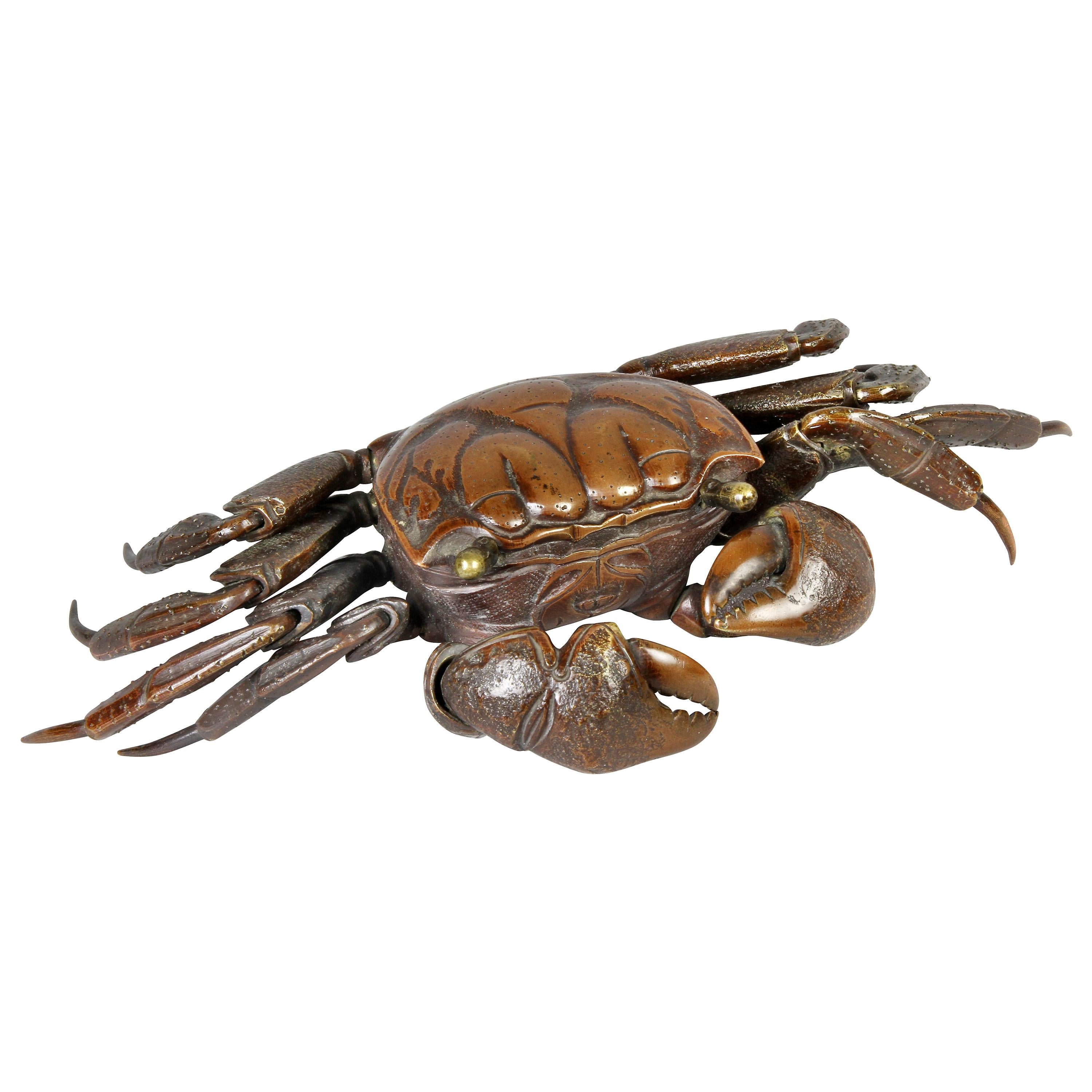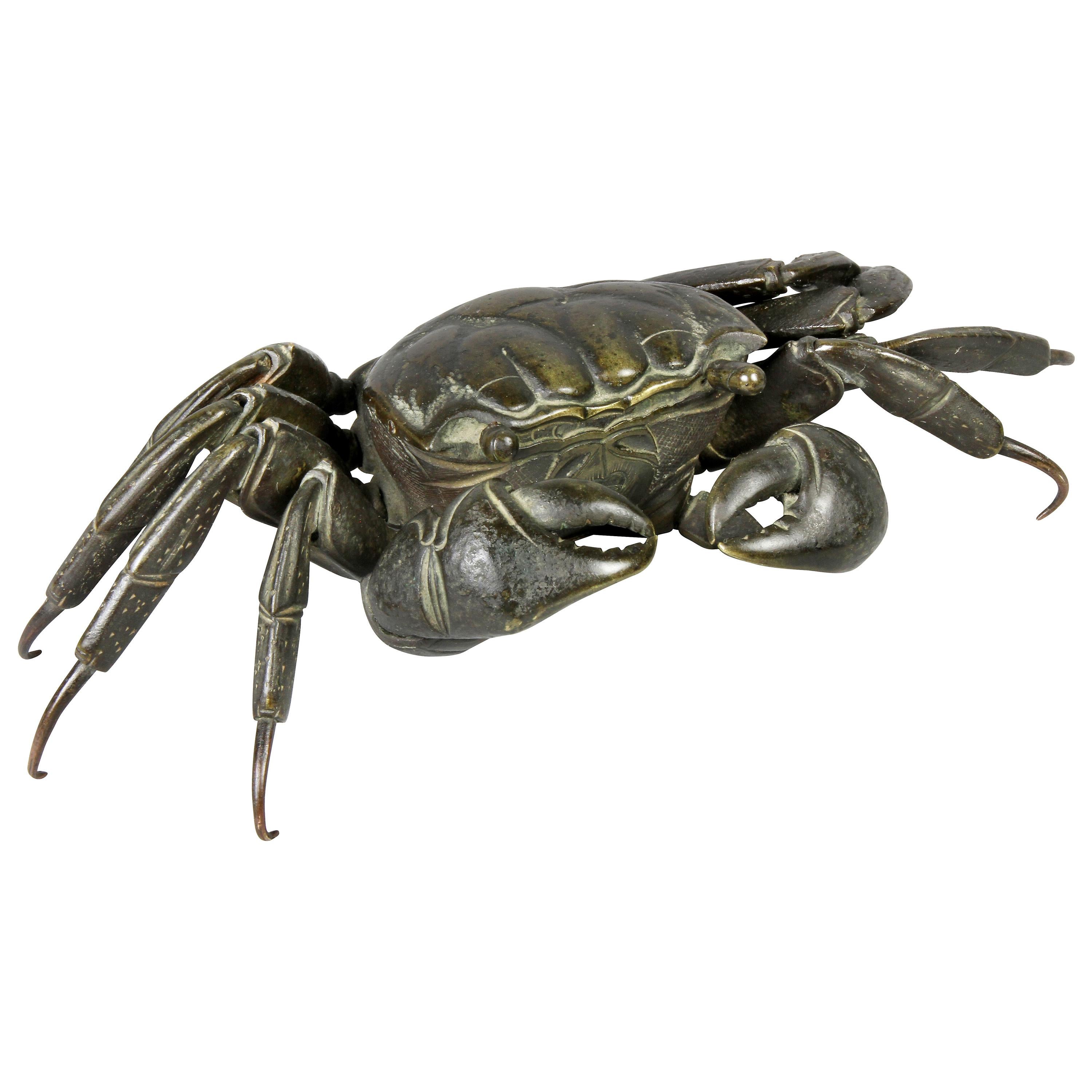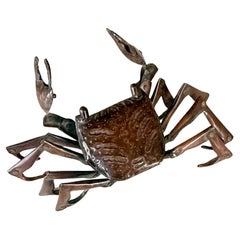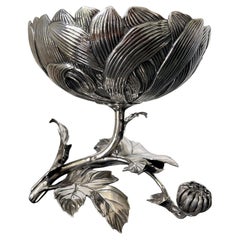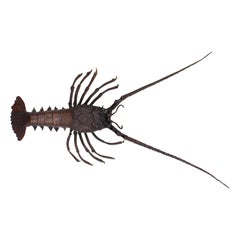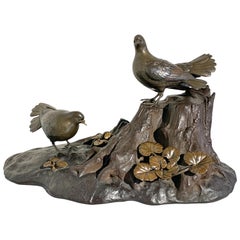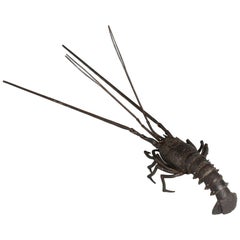
Large Japanese Articulate Lobster Okimono Meiji Period Signed
View Similar Items
Want more images or videos?
Request additional images or videos from the seller
1 of 14
Large Japanese Articulate Lobster Okimono Meiji Period Signed
About the Item
- Creator:Myochin Hiroyoshi (Artist)
- Dimensions:Height: 2.5 in (6.35 cm)Width: 15.25 in (38.74 cm)Depth: 6 in (15.24 cm)
- Style:Japonisme (Of the Period)
- Materials and Techniques:
- Place of Origin:
- Period:
- Date of Manufacture:Late 19th-Early 20th Century
- Condition:Wear consistent with age and use. Fine antique condition, no losses, all joins work well, some surface patina mellow and nice, subtle color variation and a couple of verdigris spots.
- Seller Location:Atlanta, GA
- Reference Number:1stDibs: LU945019266752
About the Seller
5.0
Platinum Seller
These expertly vetted sellers are 1stDibs' most experienced sellers and are rated highest by our customers.
Established in 2006
1stDibs seller since 2010
478 sales on 1stDibs
More From This SellerView All
- Small Japanese Articulate Crab Jizai Okimono Meiji Period SignedBy Myochin HiroyoshiLocated in Atlanta, GAA small copper crab with articulated legs made by Myochin Hiroyoshi in the late Meiji Period circa 1890-1900s. As an ornamental display item, this type of small sculpture with moving...Category
Early 20th Century Japanese Japonisme Metalwork
MaterialsCopper
- Japanese Sterling Silver Chrysanthemum Dish Meiji PeriodBy MusashiyaLocated in Atlanta, GAAn exquisite Japanese sterling silver ornamental bonbon dish, circa 1890-1900. The piece was rendered in the shape of a stemmed branch of chrysanthemum blossom and was made for export market. Both botanically realistic and stylish, the piece showcases a high degree of artisanal sensitivity and technical ability of the silversmith who created this lovely piece. The petals that form the exteriors were outlined with deep and fluid relief lines of sculptural quality. The branches and leaves were rendered with attentions to the smallest details, with molding and surface texturizing using chasing in contrast with hammering. The interior of the dish is equipped with a conforming inner dish and when it is taken out, revealing the chased lines. The piece, although practical, is basically an okimono in sculptural form, a work of art on its own. It weighs about 22 ounces. Under the dish, it is marked "Pure Silver" in Kanji and SM in a rectangular cartouche. The research (carried out by Adrien Von Ferscht, an expert and author on Asian Export Silver) identified it to be Sadajiro Musashiya...Category
Antique 1890s Japanese Japonisme Metalwork
MaterialsSterling Silver
- Antique Japanese Iron Stirrups with Silver Inlay SignedLocated in Atlanta, GAA pair of antique Japanese Abumis, stirrup for horse-riding, in cast iron with elaborate silver inlay, circa 16th century Muramachi to Momoyama period. The prototype of Japanese abum...Category
Antique 16th Century Japanese Japonisme Metalwork
MaterialsSilver, Iron
- Large Japanese Embroidery Tapestry Meiji PeriodLocated in Atlanta, GAA large and finely embroidered Japanese tapestry with brocade border, circa 1900s Meiji period. The tapestry depicts, in a rather realistic style, a forested landscape in autumn flan...Category
Early 20th Century Japanese Japonisme Textiles
MaterialsBrocade, Silk
- Japanese Cloisonné Covered Jar by Ando JubeiBy Ando JubeiLocated in Atlanta, GAJapanese cloisonné enamels are known as shippo-yaki and the mid-19th century saw the production of very high quality wares in the early centers Nagoya. One of the most renowned works...Category
Early 20th Century Japanese Japonisme Metalwork
MaterialsMetal, Sterling Silver, Enamel
- Japanese Cloisonné Vase Ando Jubei with Storage BoxBy Ando JubeiLocated in Atlanta, GAA beautifully decorated cloisonné vase with silver rims by Ando Jubei (1876-1956), the celebrated Japanese Shippo studio. The piece is dated to late Meiji to early Showa period circa...Category
Early 20th Century Japanese Japonisme Metalwork
MaterialsMetal, Silver, Enamel
You May Also Like
- Myochin Style Hiroyoshi Japanese Edo Articulated Metal Rock LobsterBy Myochin HiroyoshiLocated in New York, NYJapanese Edo period articulated rock lobster made of copper, bronze and iron and signed 'Hiroyoshi' on the bottom. Made in the early 20th century (late Meiji/early Taisho period), the piece has articulated limbs, antennae, body and tail. A superb example of the Myochin style. The Myochins were a distinguished family of samurai armorers. As military conflict in Japan abated in the early 17th century and samurai warriors became courtiers, bureaucrats and administrators, the armorers were compelled to adapt their skills by making articulated sculptures...Category
Early 20th Century Japanese Meiji Metalwork
MaterialsBronze, Copper, Iron
- Japanese Mixed Metal Okimono of Doves by Seifu, Meiji Period, Late 19th CenturyLocated in Austin, TXA wonderfully naturalistic large Japanese Meiji period mixed metal okimono (ornamental sculpture) of a pair of oriental turtle doves ...Category
Antique Late 19th Century Japanese Meiji Metalwork
MaterialsBronze, Silver, Copper
- Japanese Articulated Iron Jizai Okimono of a Lobster by Myochin MuneharuLocated in Milano, ITThis articulated okimono represents a naturalistically rendered lobster, with fully articulated limbs, antennae, body, and tail and comes with an inscribed wood storage box. Signed:...Category
Antique 19th Century Japanese Metalwork
MaterialsIron
- Japan, Eagle and Snake, Bronze, Meiji PeriodLocated in PARIS, FRA spectacular large bronze with dark brown patina representing an eagle with outstretched wings and a snake. 52x40x40cm Japan, Meiji period.Category
Antique Late 19th Century Japanese Metalwork
MaterialsBronze
- Japanese Meiji Period Silver Box Signed MasayukiLocated in Newark, EnglandJapanese Meiji period silver box with shibuichi plaque dating circa 1900. The box of rectangular form with a silver polished case stamped Jungin (J...Category
Antique Early 1900s Meiji Metalwork
MaterialsSilver
- Large Japanese Cloisonné Enamel Dish, Japan Meiji periodLocated in Saverne, Grand EstBronze and cloisonné enamel dish very finely decorated with an egret in flight above various flowers on a background of copper inclusions and gold powder. The wing decorated in parti...Category
Antique Late 19th Century Japanese Meiji Metalwork
MaterialsBronze
Recently Viewed
View AllMore Ways To Browse
Meiji Okimono
Samurai Figure
Samurai Sword
Japanese Lobster
Japanese Jizai
Antique Jizai
Copper Lobster
Meiji Lobster
Spiny Lobster
Okimono Lobster
Jizai Okimono
Japanese Large Meiji Bronze
Incense Burner Asian
Japanese Bronze Dragon
Japanese Bronze Base Meiji
Chinese Antique Furniture Shanghai
Antique Censer
Metal Islamic Art
